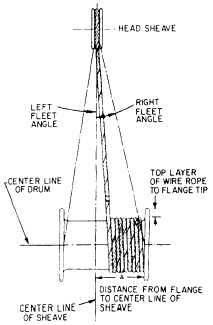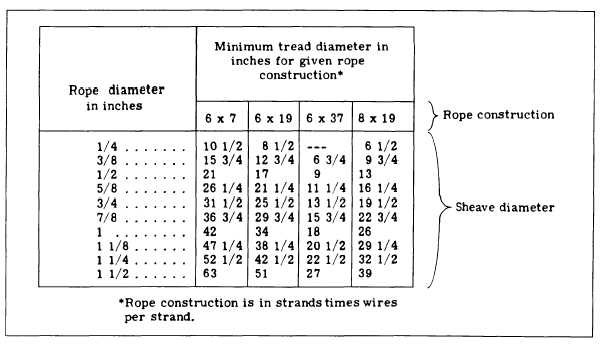Figure 13-16.-Transferring wire rope from reel to drum.
Figure 13-17.—Fleet angle relationship.
TOP or from BOTTOM TO BOTTOM, as shown in
figure 13-16.
Fleet Angle
The fleet angle is formed by running wire rope
between a sheave and a hoist drum whose axles are
parallel to each other, as shown in figure 13-17. Too
large a fleet angle can cause the wire rope to climb the
flange of the sheave and can also cause the wire rope to
climb over itself on the hoist drum.
Sizes of Sheaves
The diameter of a sheave should never be less than
20 times the diameter of the wire rope. An exception is
6 x 37 wire for which a smaller sheave can be used,
because this wire rope is more flexible.
The chart shown in table 13-1 can be used to
determine the minimum sheave diameter for wire rope
of various diameters and construction.
Reverse Bends
Whenever possible, drums, sheaves, and blocks
used with wire rope should be placed to avoid reverse
or S-shaped bends. Reverse bends cause the individual
wires or strands to shift too much and increase wear and
fatigue. For a reverse bend, the drums and blocks
affecting the reversal should be of a larger diameter than
Table 13-1.–Suggested Minimum Tread Diameter of Sheaves and Drums
13-8






